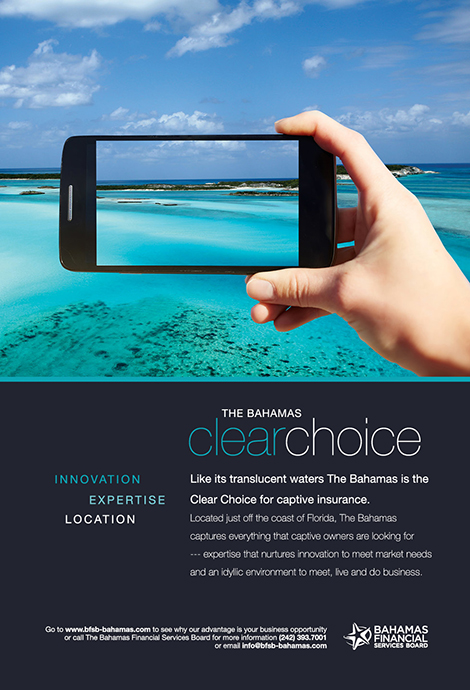Brian Collins, SRS’s recent hire for its new Luxembourg office, discusses the latest developments and the biggest challenges for the Luxembourg captive market
What trends are you seeing in Luxembourg’s captive insurance and reinsurance markets?
Following a relatively stagnant few years, there has been a significant uptake in applications and formations of new captives, particularly in the last six months.
The challenging conditions which corporates are facing in the commercial insurance market are forcing existing captive owners to re-evaluate and explore the possibility of participating in new opportunities for the captive and how best to mitigate current challenges. Corporates who do not have a captive are exploring whether they are of sufficient size and scale to set up a captive.
Often existing captives have built up significant retained earnings over time and have strong solvency coverage ratios within the captive. Corporates are under pressure to demonstrate value from investments and return on equity therefore there is additional focus on how the captive can provide value.
To better prepare for any base erosion and profit shifting (BEPS) related scrutiny companies are evaluating the economic rationale which the captive has historically provided, with more buy in from management and increased captive utilisation being seen once the historical value has been demonstrated to senior management.
As governments in France and Italy look to set up an environment where it’s attractive for French or Italian companies to move their captive back to their home countries will Luxembourg be at risk of losing its side to this new development?
In the past it could be said that certain countries may have viewed captives with a certain amount of scepticism, however, the true risk management benefits that captives have provided to owners through the recent hard market and COVID-19 pandemic appears to be changing those views. Captives, therefore, seem to be getting more traction at the senior government level of late which likely coincides with the recent press around a more captive friendly approach being considered by non-captive domiciles. Although countries such as France and Italy may not end up with specific captive legislation, a model similar to The Netherlands could be implemented whereby a certain level of regulatory proportionality is applied to captives insuring their owners’ corporate risks.
Luxembourg has been a popular domicile for French and Italian parented captives so naturally any amendments to legislation in these jurisdictions will be keenly followed. In addition, Luxembourg already has the local expertise in the workforce and that any country introducing a captive friendly approach would need to ensure that the cost structure maintains the captive’s feasibility.
What are the biggest challenges for Luxembourg’s captive market right now?
Demands on cash are still extremely high meaning that companies require value from captives particularly where there is significant cash or retained earnings within these vehicles.
As with any subsidiary located outside of the parent’s home country, there will always be tax considerations therefore in order to minimise potential scrutiny companies need to ensure they have appropriate substance and governance arrangements and validation of the economic rationale. The capital demands of Solvency II still exist therefore companies need to be of sufficient critical mass in order for the benefits to outweigh the costs.
Protected cell captive (PCC) legislation has been spoken about previously in Luxembourg however we understand that this is unlikely to be implemented in the short term. PCC’s often provide an entry point for medium-sized corporates to enter the market and then evolve to a full captive structure over time.
The longer timeframes involved to establish new captives in both Luxembourg and onshore EU could mean that the client will simply run out of time if the captive is meant to meet a renewal deadline.
The process for opening bank accounts can be cumbersome thus efforts to streamline that process would benefit the captive industry.
How do you see the Luxembourg reinsurance market growing in 2021?
With the hardening market and capacity issues, renewals have quite likely been difficult for companies. Our consulting team continues to see demand for feasibility analysis and in most cases, the analysis is indicating that there is a substantial financial and strategic value that can be provided from a captive structure.
Much of the growth both in Luxembourg and the EU has been through the expansion of current captive programmes to facilitate increased risk retentions together with the inclusion of additional lines of cover including uninsured risks.
This trend is likely to continue particularly for risks that are or will be economically inefficient in the traditional market.
What work is being done to drive captive insurance/reinsurance in Luxembourg?
On a global basis, brokers and consultants are advising clients to investigate the usage of captives, due to the lack of capacity in the market and the hardening market. In Luxembourg specifically, the European Captive Forum, to be held in November, is a huge draw for Luxembourg.
Finally, the Commissariat aux Assurances (CAA) are still renowned for the professional and pragmatic approach on the creation and implementation of captives.
European Insurance and Occupational Pensions Authority (EIOPA) recommendations following their review of the Solvency II regime have broadly been welcomed however many believe there is more work to do.
Although EIOPA makes provisions for more proportionality to be applied there is still an onus on the national regulators like the CAA to apply a more pragmatic approach to regulation.
What will be the big opportunities for Luxembourg’s captive market over the next 12 months?
The expectation is that markets will remain hard for the time being, with the continued increase in enforced deductible levels and premium rates.
The opportunities will therefore likely come from an expansion of existing captive programmes with the inclusion of higher retention on traditional insurance lines, together with the inclusion of non-traditional lines. ■





